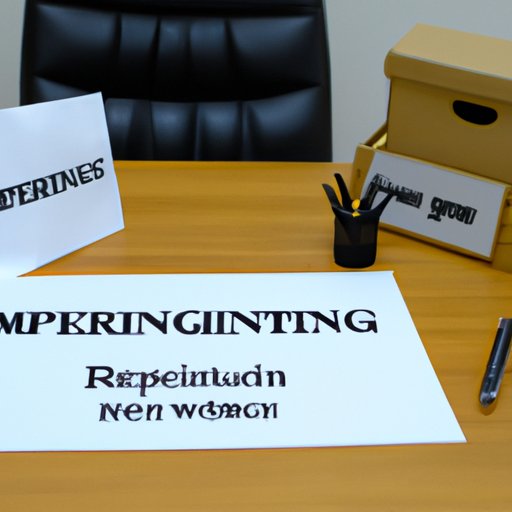Introduction
Having the right team fit is essential for any organization’s success. An employee who is not a good fit can have a negative impact on morale and productivity, so it’s important to address the issue as soon as possible. But what does it mean to be a “not good fit”? Generally, this term refers to someone who does not share the same values or beliefs as the company, does not perform to expectations, or does not fit in with the culture of the organization.
Steps to Take When Considering Firing an Employee Who Is Not a Good Fit
When faced with the decision of whether or not to fire an employee who is not a good fit, there are several steps to take:
1. Assess the Situation
Before making any decisions, it’s important to assess the situation. Identify the behavior or performance issues that make the employee a not good fit, and consider if there are any potential solutions that could help remedy the situation. For example, is additional training needed? Do they need more support from their manager? Could switching roles within the organization be beneficial?
2. Document Performance Issues
If the situation cannot be remedied, then it’s important to document the performance issues. This will provide evidence of the employee’s behavior and demonstrate why the decision was made to terminate their employment. Make sure to keep these documents secure and confidential.
3. Consult With HR
Consulting with HR is another important step when considering firing an employee who is not a good fit. They can provide advice on local, state, and federal laws pertaining to employee termination, as well as ensure compliance with all relevant laws and regulations.
4. Prepare for the Termination Meeting
Once the decision has been made to terminate the employee, it’s time to prepare for the termination meeting. This includes creating a written record of the decision and reasons for it, scheduling the meeting in advance, and determining who should be present at the meeting.

Legal Considerations to Be Aware Of When Terminating an Employee
When terminating an employee, it’s important to understand and comply with all relevant employment laws and regulations. Local, state, and federal laws may vary, so it’s important to consult with HR and/or an attorney to ensure compliance. Additionally, employers should avoid discrimination or retaliation against terminated employees. It’s important to treat all employees fairly and equally.

Process of Documenting and Preparing the Termination Meeting
Creating a written record of the decision and reasons for it is an important part of preparing for the termination meeting. This document should include the date of the decision, the reasons for the decision, and any other relevant information. This document should be kept secure and confidential.
It’s also important to schedule the meeting in advance. This will give the employee time to process the news and prepare for the meeting. When scheduling the meeting, consider who should be present. Typically, the HR representative and the employee’s manager should be present.

Strategies for Delivering the News in a Respectful and Professional Manner
When delivering the news, it’s important to be direct and honest. Avoid using confrontational language and try to show empathy. Explain the reasons for the decision in a clear and concise manner, and offer assistance during the transition if possible. It’s also important to remain professional throughout the process.
Benefits of Offering Severance Packages
Offering a severance package to a terminated employee can be beneficial for both parties. It can help uphold the company’s reputation, as well as reduce potential legal risks. Additionally, it can provide financial support to the employee during the transition.
Advice on Handling Post-Termination Communication
Once the termination has taken place, it’s important to establish guidelines for post-termination communication. Keep communication professional and maintain confidentiality. Additionally, it’s important to be aware of any non-disclosure agreements or other restrictions that may apply.
Conclusion
Firing an employee who is not a good fit can be a difficult decision to make. Taking the necessary steps to ensure compliance with employment laws and regulations, documenting performance issues, and delivering the news in a respectful and professional manner are all important considerations. Additionally, offering a severance package and establishing guidelines for post-termination communication can help ensure a smooth transition for both parties. If you need additional resources, seek out legal advice or speak to a professional in the field.
(Note: Is this article not meeting your expectations? Do you have knowledge or insights to share? Unlock new opportunities and expand your reach by joining our authors team. Click Registration to join us and share your expertise with our readers.)
